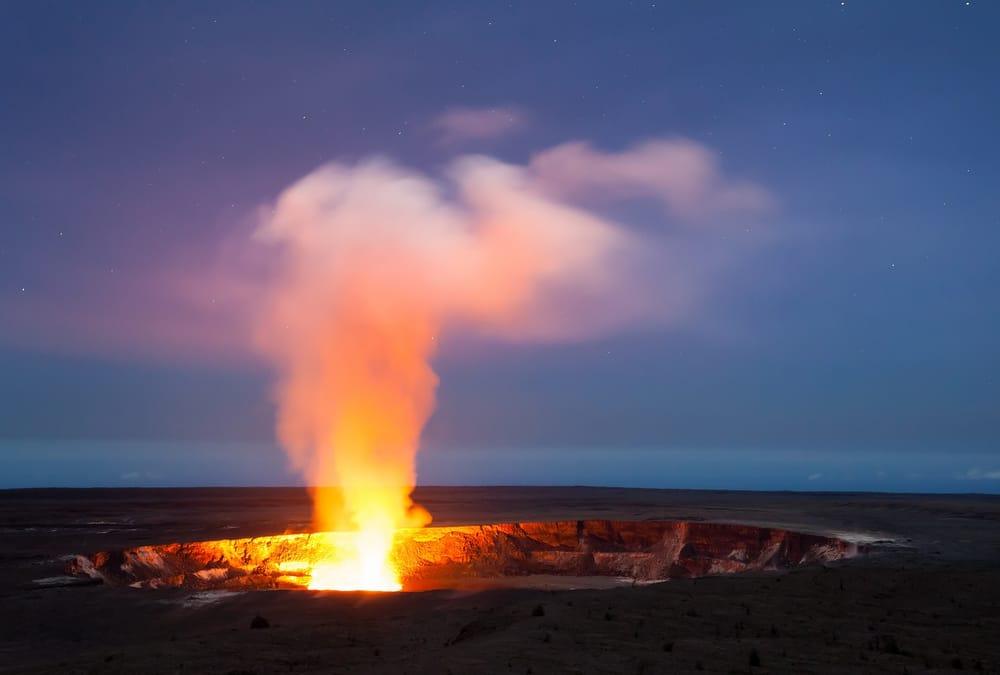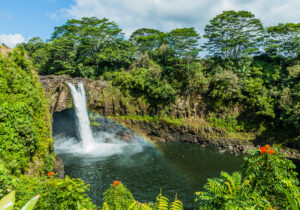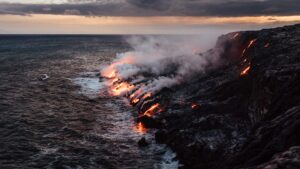National Park Service with an update on the Kilauea Volcano Eruption as of March 7th courtesy of USGS. Our volcano tours will take you safely to the volcano in comfort and luxury and our knowledgeable guides will educate you on the culture of Hawaiʻi.
Activity Summary: The summit eruption of Kīlauea Volcano, within Halemaʻumaʻu crater, is currently paused, corresponding with deflationary tilt yesterday and a drop in volcanic tremor. All recent activity has been confined to the crater, and there are no indications of activity migrating elsewhere on Kīlauea.
Halemaʻumaʻu Lava Lake Observations: Eruption of lava from the western vent into the active lava lake within Halemaʻumaʻu crater diminished throughout the afternoon yesterday and paused in the evening. The active lava lake surface of Halema‘uma‘u crater dropped significantly, corresponding with deflationary tilt yesterday and a decrease in tremor at the summit. The highest point on the Halemaʻumaʻu crater floor has risen approximately 97 meters (318 feet) since the eruption began on September 29, 2021. The erupted volume is 45 million cubic meters (59 million cubic yards) of lava as measured on January 25, 2021.
Summit Observations: Deflationary summit tilt yesterday became inflationary around 4:30 am HST this morning, which continues at this time. Seismic data shows that the volcanic tremor decreased yesterday but is still present this morning. Earthquake activity at the summit remains below background levels. A sulfur dioxide (SO2) emission rate of approximately ~2500 tonnes per day (t/d) was measured on February 25.
Rift Zone Observations: No unusual activity has been noted along the East Rift Zone or Southwest Rift Zone; low rates of ground deformation and seismicity continue along both. Measurements from continuous gas monitoring stations downwind of Puʻuʻōʻō in the middle East Rift Zone remain below detection limits for SO2, indicating that SO2 emissions from Puʻuʻōʻō are negligible.
Hazard Analysis: This eruption at Kīlauea’s summit is occurring within a closed area of Hawaiʻi Volcanoes National Park. Therefore, high levels of volcanic gas are the primary hazard of concern, as this hazard can have far-reaching effects downwind. Large amounts of volcanic gas—primarily water vapor (H2O), carbon dioxide (CO2), and sulfur dioxide (SO2)—are continuously released during eruptions of Kīlauea volcano. As SO2 is released from the summit, it reacts in the atmosphere to create the visible haze known as vog (volcanic smog) that has been observed downwind of Kīlauea. Vog creates the potential for airborne health hazards to residents and visitors, damages agricultural crops and other plants, and affects livestock.
Additional hazards include Pele’s hair and other lightweight volcanic glass fragments from lava fountains that will fall downwind and dust the ground within a few hundred meters (yards) of the erupting fissure vent(s). Strong winds may waft lighter particles to greater distances. Residents should minimize exposure to these volcanic particles, which can cause skin and eye irritation.
Other significant hazards also remain around Kīlauea caldera from Halemaʻumaʻu crater wall instability, ground cracking, and rockfalls that can be enhanced by earthquakes within the area closed to the public. This underscores the extremely hazardous nature of the rim surrounding Halemaʻumaʻu crater, an area that has been closed to the public since early 2008.
The Hawaiʻian Volcano Observatory (HVO) continues to closely monitor Kīlauea volcano.





